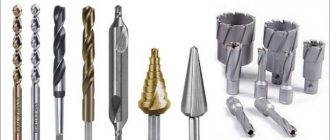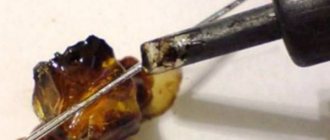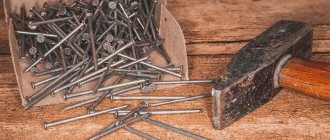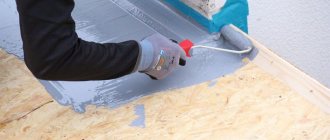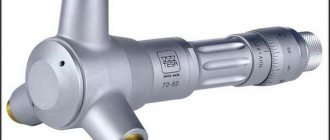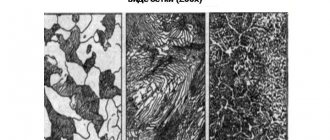Rubber is a plastic with a sparse mesh structure in which the binder is a polymer in a highly plastic state.
In rubber, the binder is natural ( NC ) or synthetic ( SC ) rubbers.
In Fig. 1 and 2 show the area of application of rubbers and the resulting products.
Rice. 1 Application of rubbers
Rice. 2 Products using rubbers
Rubber is characterized by high plasticity, due to the peculiarity of the structure of their molecules. Linear and slightly branched rubber molecules have a zigzag or spiral configuration and are highly flexible (Fig. 3, top). Pure rubber creeps at room temperature and especially at elevated temperatures, and dissolves well in organic solvents. Such rubber cannot be used in finished products. To increase elastic and other physical and mechanical properties, a rare network molecular structure is formed in rubber. This is carried out by vulcanization - by introducing chemical substances into the rubber - vulcanizers, which form transverse chemical bonds between the units of rubber macromolecules (Fig. 3, lower). Depending on the number of cross-links formed during vulcanization, rubber of different hardness is obtained - soft, medium-hard, hard.
Rice. 3 Structures of rubber and rubber
The mechanical properties of rubber are determined by the results of tensile and hardness tests. When pressing a blunt needle or a steel ball with a diameter of 5 mm, the hardness is assessed based on the value of the measured deformation (Fig. 4).
Rice. 4 Determination of tread rubber hardness
When testing tensile strength Ϭz (MPa), relative elongation at the moment of rupture εz (%) and residual relative elongation Ѳz (%) are determined (Fig. 5).
Rice. 5 Laboratory installation for mechanical testing of rubber
During operation, under the influence of external factors (light, temperature, oxygen, radiation, etc.), rubbers change their properties - they age. The aging of rubber is assessed by the aging coefficient Kstar , which is determined by keeping standardized samples in a thermostat at a temperature of -70°C for 144 hours, which corresponds to the natural aging of rubber for 3 years. Frost-resistant rubber is determined by the brittleness temperature Tcr , at which the rubber loses its elasticity and breaks brittlely under impact load.
To assess the frost resistance of rubber, the coefficient Km , equal to the ratio of the elongation δm of the sample at freezing temperature to the elongation δo at room temperature.
What is rubber
Any person in his life has encountered rubber in one case or another, usually from childhood.
Rubber is an elastic substance that is obtained after the vulcanization reaction of both natural and synthetic rubbers. Rubber material, which is also called “vulcanizate”, is an elastomer that has a three-dimensional cross-linked structure, formed by cross-linking rubber macromolecules with chemical bonds of various natures. As mentioned above, rubber is an elastomer in nature, that is, unlike conventional plastics, they are capable of mechanical stress returning to their original shape and size after the load is removed.
Natural and synthetic components
The main component for the production of tires is rubber. It can be obtained either naturally or produced artificially in the laboratory. Organic, has long been extracted from rubber trees. To do this, longitudinal strips are cut into the bark of the tree and “its tears” are collected, that is, the sap of the tree, since “rubber” is translated as “the tree that cries.” It is this tree sap that is the main raw material for rubber production.
However, the cost of such an expensive method of extracting natural rubber is much higher than the chemical production of its analogue under artificial conditions. The second, no less important component is carbon black; for the production of tires its share is at least 30%. The molecular extent of the properties of carbon allows us to determine its role among all other components as a good bonding agent. Carbon (or soot) has a beneficial effect on the following rubber abilities:
- increases wear resistance;
- increases durability significantly;
- enhances the strength of the product.
There is a cheaper analogue of soot. To reduce the cost of tire production, some manufacturers replace carbon black with silicic acid. Such a replacement does not always pay off, since the level of wear resistance of the wheels decreases. But one of the positive aspects of such a replacement can be noted that this increases the adhesion of rubber to the wet pavement of the road.
Oils and resinous substances, additionally included in the rubber structure, reduce the stiffness of winter wheels. Each manufacturer focuses on one or another substance in order to highlight certain characteristics of the product:
- traction with the road,
- wear resistance or parameters,
- providing good speed development.
Receipt
Rubber in modern industry is produced mainly by vulcanization of rubber mixtures that have a rather complex composition. In the composition of these mixtures, the main component and basis of the future rubber are rubbers; their amount can be up to 60 percent of the mass of the mixture. Its other components are vulcanizers, accelerators, activators, fillers, antioxidants and plasticizers. In addition to these main components, it is possible to introduce other chemicals into the mixture: regenerates, modifiers, dyes, powders, fragrances, etc. The entire rubber mixture can consist of 20-30 substances.
The specific rubber that will serve as the basis for a particular rubber and other components of the mixture are selected based on the purpose, conditions of use and other requirements for the rubber product. Also important for the properties of the product is the technological process that will be used for processing, economic and other factors.
The technical process for manufacturing products from the material in question consists of the operation of mixing rubber with other components of the rubber mixture in mixers or using rolling, manufacturing semi-finished products, their cutting, assembly and other post-processing, as well as subsequent vulcanization of the products. Semi-finished products can be profiles obtained by extrusion (analogous to plastic extrusion); sheets obtained by calendering; rubberized fabrics; cord, etc. Direct vulcanization takes place in periodic type reactors, for example in presses, boilers, cyclic or continuous autoclaves, for example tunnel, drum and others.
Fig.1 Autoclave for vulcanizing tires
The dimensions and configuration of the product, due to the high plasticity of the source material, are given and fixed directly during vulcanization. During processing, molding of products in vulcanization presses, as well as the injection molding method, are actively used. When using these methods, molding and vulcanization are combined in a single process operation. The main vulcanizer for rubber is elemental sulfur, which is usually added in an amount of several percent by weight of the mixture. When using mixtures containing from 30 to 50 percent sulfur in the composition, the output is ebonite products or blanks.
What is rubber
The material rubber has been extracted from rubber trees since ancient times. The most famous name for such a tree is the Brazilian Hevea. High-strength furniture products are also made from this wood species. Since this material does not absorb moisture, it reliably withstands the attacks of pests and does not rot.
Tree plantations are mainly located in Malaysia and also have an Asian origin. Natural rubber can also be found in the sap of rubber trees such as Castilla.
Castilla has a natural size of more than 50 meters, and the sap in such a tree can be found in the bark, leaves and flowers of the tree. Usually the sap flows out where a branch or bark is torn off; in the case of artificial extraction of this substance, the tree bark is forcibly cut off. The Brazilian Hevea also has impressive dimensions, up to 50 meters in length, and diagonal cuts are made in a ten-year-old tree that has grown, which makes it possible to collect the sap in a container.
As rubber sap enters the air, it becomes denser and more viscous. Basically, rubber liquid is collected from these two types of rubber trees: Hevea and Castilla. In many countries in Asia, America, Peru, and Malaysia there are entire stands of these trees, which are grown only for the extraction of valuable rubber. Therefore, many local residents are actively involved in the lucrative rubber business, many of them doing it all their lives.
History of rubber
Columbus was the first to bring rubber to Europe from his travels in the form of an elastic ball. The Indians have already tried to make shoes, fabric, water containers and even toys for children from rubber juice. Then everyone forgot about rubber until the beginning of the 18th century, when an expedition from France again found a tree that produces stretchy material. Scotsman C. Mackintosh proposed the idea of laying rubber material between two layers of fabric.
Raincoats that did not get wet in the rain, galoshes and hats appeared. Rubber material was even laid on the roofs of houses. But in winter such products hardened and cracked, and in summer they became soft and had an unpleasant odor. However, the American Charles Goodyear at the beginning of the 19th century found a way to improve the strength and elasticity of the material - he added sulfur to the composition and subjected the mixture to heat. This is how durable and fairly high-quality rubber appeared.
Rubber properties
The material in question is of interest primarily for its elasticity. Rubber, in essence, is a cross-linked colloidal substance, where the rubber is the dispersion phase and the fillers are the dispersed phase. The main quality of rubber is its high elasticity; it is capable of undergoing large deformations at different temperatures, which in turn are reversible.
Rubber has the properties of a solid, a liquid, and even a gas; for example, the entropic quality of its elasticity is such a quality. In general, the characteristics of each type of rubber depend mainly on the type of rubber used. Its qualities vary widely when using different rubbers, mixing or modifying them.
The elastic modulus of rubber at small deformations varies from 1 to 10 MPa. The Pausson's ratio is about 0.5. Reversible deformation in case of stretching is up to 10 product sizes.
Rubbers have good sound insulation, friction properties, wear resistance, and thermal insulation properties. They are also good diamagnetic and dielectric materials. There are special brands of electrically conductive and magnetic rubber.
The material in question is known for its low water absorption and swelling in organic matter. Some of the rubbers have good oil, gasoline, water, steam, chemical, radio and heat resistance. The service life of rubber products can, in different cases, range from several days to decades.
Composition of modern tires
Cars today have rubber tires, which can be based on natural rubber or synthetic rubber, artificially produced in a laboratory. Rubber (of one type or another) usually occupies the lion's share of the entire rubber mixture, its share is approximately 40-50% of the total volume of rubber.
Then carbon black (soot) is added to the rubber. Its part in the total volume is 25-30%. A car tire becomes strong thanks to carbon black; it is the binding link in the rubber molecules. The material is able to withstand high temperatures well. Wheels with high soot impurities cope well with sudden braking. Their service life increases by as much as 10-15 times.
Another component is silicic acid. Its cost is much cheaper than carbon black, and the properties that give the wheel strength due to the good adhesion of rubber molecules are almost identical. Therefore, some tire manufacturers replace soot with silicic acid. However, there are manufacturers who do not use this component, considering it not wear-resistant enough.
If we analyze the tire market from well-known manufacturers and the composition of their tires, we can come to the conclusion that soot is quite often present in the composition of tires. Leading car accessories companies emphasize that this particular component increases the car’s ability to react well on a wet track. On average, its share in the total mass of the tire is about 10%.
A component with a small share in the total volume are oils or resins. Their amount is similar to soot impurities and is 10%. A larger amount of resins is present in the winter version of the rubber; they soften the entire composition so that the tires do not “flatten” at low temperatures, which negatively affects ride quality. In the summer version of the tires, the proportion of resins is slightly reduced.
And the final ingredient of the entire mixture is secret components that manufacturers do not disclose, but they sometimes have a strong impact on the final result and quality of the finished tire. From studying the entire mixture for rubber production, we can conclude that synthetic rubber is not yet ready to completely replace natural rubber in its qualities, so they are often combined together.
Application
Rubber is used in large quantities in agriculture and households, medical equipment, building materials, industry, the sports industry, etc. Over 50 percent of the produced material is used for the production of tires.
In addition, there are tens of thousands of types of rubber products, the most famous of which are: conveyor belts, various belts, sleeves, hoses, gaskets, rings, cables, soles, mats, coating materials, sealants, etc.
Fig.2 Covering the playground with rubber crumbs
Rubber classification
of rubbers are distinguished by purpose:
: general purpose, heat-resistant, frost-resistant, oil- and petrol-resistant, resistant to chemically aggressive environments, dielectric, electrically conductive, magnetic, fire-resistant, radiation-resistant, vacuum, friction, food and medical purposes, for tropical climate conditions, etc. (Table 2);
Porous, or spongy (see Porous rubber), colored and transparent rubbers
.
Advantages and disadvantages of tire welding
The rubber restoration process is in demand for several reasons:
- Versatility
is the main advantage of tire welding. If desired, you can restore almost any worn tire, regardless of type. The only thing that will differ is the cost of the work. - Possibility of reusable recovery
. If the cord of the product has a rigid structure (as on truck tires), welding can be performed up to two or three times without loss of tire performance. Accordingly, the service life of the tire also increases significantly. - Improving the final characteristics of the tire
. Thanks to the use of modern materials, the restored product becomes more wear-resistant and its service life increases. - Affordable price
. One of the main advantages of tire welding is the low cost of the service (compared to buying a new set). This is easy to explain, because the cord structure is not affected, and only the working part of the rubber (tread) can be restored. As a result, little material is wasted. The benefits are most noticeable for truck tires, which are considered the most expensive to produce. - Mileage
. After restoring the tires, you can drive another 120-150 thousand kilometers. This feature is a big plus for everyday use of cars. At the same time, the efficiency of the tires does not decrease and remains at the same level as that of new cars.
Based on the above, it can be judged that tire welding has many advantages. Despite this, it is not in great demand among many car owners.
There are several reasons:
- Not all types of automobile rubber can be welded. First of all, the restrictions apply to tires for passenger cars.
- After restoration, you cannot be sure of complete safety, especially if welding was carried out by people with little experience. If the technology is violated or low-quality materials are used, driving on retreaded tires is dangerous. That is why it is recommended not to skimp on this procedure and give preference only to qualified professionals.
Mandatory tire labeling from 2022
It covers companies and individual entrepreneurs that import, produce and sell tires.
Organizations and individual entrepreneurs who:
- purchase tires not for sale;
- provide postal services for the delivery of tires when trading by samples or during distance sales.
Mandatory marking is the application of DataMatrix identification codes to goods, as well as the exchange of information between companies (IP) and the state information system (GIS) for monitoring “Honest Sign”. The system operator is the Center for the Development of Advanced Technologies.
Order an electronic signature to work in mandatory marking systems
Tire production technology
Since car tires are made not only from a rubber base, it is worth paying attention to other components. The base of the wheel is made from special thread cords. They are divided into:
- steel;
- textile;
- polymer.
The thread production mode is similar to the operation of weaving equipment. The produced thread enters the machine, where it is enveloped in a rubber coating. Then the material is divided into belts of different widths for different caliber tires. To form a protective coating, rubberized threads are fed to the appropriate equipment, where by pressing through the forming holes they become a tread.
When forming, the protective edges of rubber go through the following stages:
- The steel wire is wrapped in a rubber coating.
- Taking into account the tire parameters, the material is divided into the required size (circles).
- Special equipment automatically assembles the sides.
This equipment operates in semi-automatic mode. The master loads circles and tire reels onto it. The equipment assembles all the parts into a single tire and fills the tread with air mass. The final stage of the process is vulcanization and heat treatment of the tire with high pressure steam. On hot rubber, the machine presses out the necessary characteristics with the mark of the enterprise, after which only the stage of testing the finished product remains.
What and how are rubber (tires) made from? For your car wheels.
I continue with interesting and useful articles. The first was about calculating the cost of a car. Today I want to talk about rubber or tires. What are they made of and how do they travel to our shelves? Many people mistakenly think that everything is based on oil, many are even sure that it is 90% of it, but this is not entirely true. AT the dawn of their appearance, tires were almost 100% a product of nature...
Technology for creating automobile rubber
Summer and winter tires are known to be distinguished by their rigidity. To make a car tire more rigid and abrasion-resistant, artificial rubber is used. Winter tires, on the contrary, are made from natural rubber, which does not allow the tires to “tan” in the cold. Of course, you can use special resins and additives to achieve a similar effect with non-natural material, but in terms of their characteristics they will never catch up with the natural product. In addition, the tires will wear out faster.
The process of making rubber tires is quite long and labor-intensive. First, the collected sap from the rubber trees is placed in large baths of acid for several hours to harden it. The resulting material is called latex. Excess water is removed from it and passed through rollers to obtain a wide, flat strip, which is then crushed to form a light airy mass, which, after firing, is turned into blocks.
After this, the blocks are placed in a special cauldron, into which various additional components are added. They are what give car tires their different characteristics. The proportions and amount of additives are the own development of the manufacturing companies and this is where all the difference in the variety of tires lies. In this case, the manufacturer essentially made the tire from a single source material, just as a cake is essentially made from flour. However, numerous developments, research and classified elements make it possible to outperform competitors in terms of consumer characteristics at the same cost.
The mixture of rubber blocks and additives is mixed and heated, turning it into real rubber. It is rolled out again into strips and then allowed to cool.
Tire manufacturing
The main material from which tires are made is not only rubber.
Inside it is a wire frame consisting of many threads. It can be textile, metal or polymer. The cord is woven according to the type of fabric, and then rubberized using an extruder. Then the frame is rolled out into strips of different widths using special machines to obtain the required tread size. The required tread pattern is also obtained by extrusion (punching). The sidewalls of a future tire are made in a similar way: a frame is formed, layers of rubber are applied to it, then the excess wire is cut off and a ring-shaped blank of different sizes is formed (depending on the diameter of the wheels), to which rings of braces (protrusions along the edge of the sidewalls that hold the tire on the rim) are then attached ).
The finished sidewalls are then assembled together with the tread belt on a special machine. The machine connects all the parts of the tire and inflates it from the inside to give it its shape. The resulting blanks are subjected to vulcanization, as a result of which they are transformed into a single whole, and then treated with hot steam under pressure. The final stage is the application of technological inscriptions and signs to the sidewalls of the tire using a special press. After this, the finished tire is tested to ensure it meets the necessary conditions and requirements.
Thus, the production of car tires consists of several rather complex stages that require serious technological equipment. It becomes clear why high-quality processing procedures are required at each stage, because the final product depends on the characteristics of the starting materials, the proportions of added substances and components. Manufacturers do not stand still and are constantly developing new tire models, so when purchasing new products, it is worth familiarizing yourself with their characteristics in more detail and checking whether the declared parameters correspond to real indicators.
Best regards, Maxim Markov!
carsmotion.ru
Types of vulcanization
The most popular methods for creating rubber remain hot and cold vulcanization. Hot vulcanization is carried out at temperatures from +2500C to +2900C. Cold vulcanization gives temperatures from +200C to +300C and is usually used to create sealant materials. There is also sulfur vulcanization, which is needed to create inner tubes for cars, military and hiking shoes, and bicycle tires. In this case, hot sulfur and catalysts are used to help speed up the vulcanization process.
